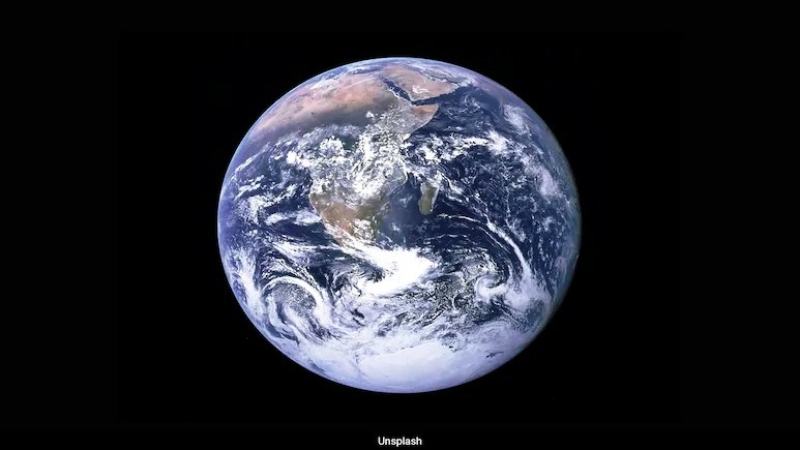- Trump considering military options on Greenland; Europe rejects |
- Fertiliser crunch threatens Kushtia’s onion boom despite high prices |
- Security Council Divided on United States' Venezuela Action |
- Over 1.53m voters register for postal balloting: Shafiqul Alam |
Earth's rotation speeding up, making days slightly shorter

Planet Earth UNsplash
Dhaka, July 11 – Earth is expected to experience slightly shorter days in the coming weeks as the planet spins faster due to the changing position of the moon, according to a report by Live Science.
On July 9, July 22, and August 5, 2025, the moon’s position is forecast to influence Earth’s rotation, reducing each day’s length by approximately 1.3 to 1.51 milliseconds from the standard 24 hours.
A typical Earth day lasts about 86,400 seconds, or 24 hours. However, scientists note that Earth’s rotation is not perfectly consistent. It can be influenced by several factors including the gravitational pull of the moon and sun, the planet’s magnetic field, and shifts in Earth’s mass caused by natural or human-induced activities.
Historically, Earth’s rotation has been slowing down over time. Scientists estimate that 1 to 2 billion years ago, a day lasted only 19 hours due to the moon’s proximity to Earth, which exerted a stronger gravitational pull. As the moon has gradually moved away, days have become longer.
Notably, in 2020, researchers recorded Earth spinning faster than at any point since the 1970s. The shortest day on record occurred on July 5, 2024, when Earth completed its rotation 1.66 milliseconds quicker than the standard 24-hour period.
The moon’s distance from Earth’s equator on specific days can accelerate the planet’s rotation. This effect is similar to how a spinning top moves faster when its axis shifts. Climate-related factors such as melting ice and the movement of groundwater have also contributed to changes in Earth’s spin. Additionally, seismic events and seasonal variations can cause slight shifts in day length.
“The 2011 earthquake that struck Japan shortened the length of the day by 1.8 microseconds,” said Richard Holme, a geophysicist at the University of Liverpool, in an email to Live Science. “Even the changing seasons affect Earth’s spin.”
“There is more land in the northern hemisphere than the south,” Holme explained. “In northern summer, the trees get leaves, which means that mass is moved from the ground to above the ground, further away from the Earth’s spin axis.”
Holme further noted that the rate of rotation of any moving object is influenced by its distribution of mass. “When an ice skater spins on the spot, they rotate faster when their arms are tight to their chest, and slow themselves down by stretching their arms out,” he said. “As Earth's mass moves away from its core in summer, its rate of rotation must decrease, so the length of the day increases.”
Source: NDTV via UNB

